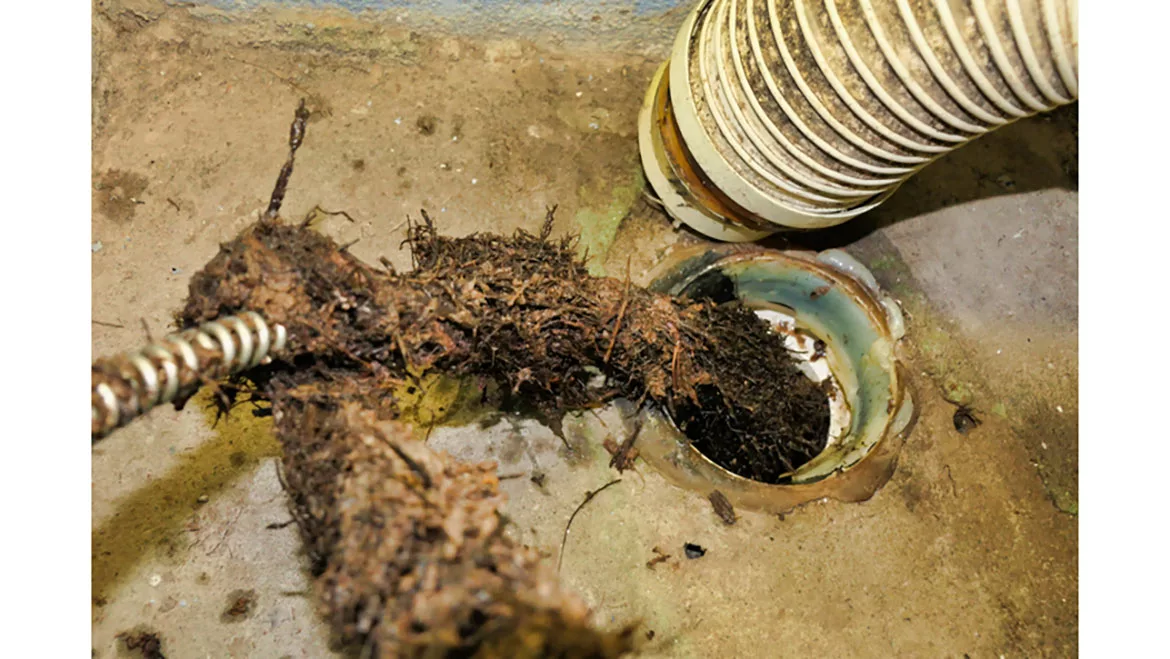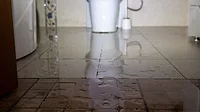Master the basics of sewer root removal
Preventative maintenance and control tips.

Image courtesy of PlazacCameraman / iStock / Getty Images Plus
In the world of plumbing, the infiltration of roots into our sewer systems has continually presented a challenge. Root intrusion can block sewer lines and affect the sewer system's hydraulic capacity; i.e., ability to maintain or pass a given flow rate.
This obstruction accounts for blockages, unpleasant odors, slow drainage, and the dreaded overflow. As we delve deeper into the intricacies of root control and preventative maintenance, it's clear that this issue deserves our undivided attention.
How root intrusion happens
In old clay sewer lines, drain sections were connected by inserting a non-bell (hub) end of the pipe into the hub of the next section and filling the gap with concrete. With time, the concrete deteriorates, and roots grow through the openings and expand, damaging the piping. Roots can also grow through partially collapsed pipe or even rotted-out cast iron.

If left untreated, root intrusion can eventually lead to a complete collapse of the sewer system. The roots on the outside of the pipe will encapsulate it, creating pressure that will cause the sanitary system to collapse and shut down. Image courtesy of Oatey Co.
Prevention is Better than Cure
The adage rings true in the prevention of root intrusion. Correct backfilling during the installation process is paramount; it ensures the pipe retains stability and negates any possible sagging. The International Plumbing Code elaborates on the backfilling process, providing guidelines that help maintain the pipe's alignment and support.
The International Plumbing Code 306.3 Backfilling states: "Backfill shall be free from discarded construction material and debris. Loose earth free from rocks, broken concrete and frozen chunks shall be placed in the trench in 6-inch (152 mm) layers and tamped in place until the crown of the pipe is covered by 12 inches (305 mm) of tamped earth. The Backfill under and beside the pipe shall be compacted for pipe support. Backfill shall be brought up evenly on both sides of the pipe so that the pipe remains aligned. In instances where the manufacturer's instructions for materials are more restrictive than those prescribed by the code, the material shall be installed in accordance with the more restrictive requirement."
While proper backfilling is a reliable way to aid in preventing root intrusion, deterioration of concrete or rotted-out cast iron is inevitable over time, allowing roots to grow through the openings.
If left untreated, root intrusion can eventually lead to a complete collapse of the sewer system. The roots on the outside of the pipe will encapsulate it, creating pressure that will cause the sanitary system to collapse and shut down.
At that point, the last resort would be to dig up the sewer line, costing the homeowner thousands of dollars, depending on location. Pipelining offers an alternative solution to avoid digging up the damaged sewer line. A cured-in-place pipe (CIPP) (epoxy liner) is applied to the inside of the pipe, sealing any openings or gaps to stop leaks and prevent future root intrusion.

Image courtesy of eyjafjallajokull / iStock / Getty Images Plus
Mechanical extraction of roots
Once severe root activity is identified within the sewer line, the roots must first be mechanically removed. Effective root control is guided by the right tools. Root cutters, cable machines and jetters play a pivotal role in freeing the sewer lines from these intruders. While snaking is a popular method, using an appropriate cable and head size is critical to achieve effective cleaning.
Snaking the line with a root cutter is one of the most common ways to remove roots. But be sure the heads and bits used on the ends are specifically designed for cutting out roots. Some heads can expand to adjust to the exact inside diameter of the pipe, completely cutting the roots down to the inside face of the pipe. This feature is particularly helpful. Many cutting tools will leave two inches of roots at the top because they do not fill the entire inside diameter of the pipe.
Keep the following in mind when snaking the line with root cutters:
- Proper cable size: If you don't use the right cable size, you could either damage the tool or cause an injury. Say, for instance, you use a smaller snake, it will get caught in the roots and you're left with a 20-foot cable stuck in the line. An improperly sized cable could get wound up or whip back, potentially leading to an injury.
- Proper head size: As noted above, if you use the wrong head size, you won't get a full cleaning of the inside diameter of the pipe. Sizing is based on the pipe diameter. Most sewer lines will be three to four inches, but the main sewer line in commercial applications could be larger. A standard rule of thumb is to use a cable at least 3/4 inch to an inch in diameter.
- Maintaining mechanical equipment: Maintenance is key. If the root-cutting head is dull or damaged, it won't be as effective. This also applies to snake cables. If a cable is kinked or bent, it can cause it to bind up, resulting in injuries as well as ineffectiveness because it has a weakened point. It could even break off and get stuck in the sewer.
Sewer jetting is another common practice for root removal. Jetters consist of a high-pressure water pump, water tank, hose reel, and a half-inch to one-inch sewer-cleaning hose. A sewer jetter is a great tool to remove piled-up root debris that remains in the pipe after using a root cutter.
The power of chemistry

Hercules R-D Root Destroyer is a special flake-like formula that prevents and stops root growth in external drain lines. Because this formula interacts with water, the drain line will need to be mechanically opened (snaked) to allow water flow if it is completely blocked.
Chemicals are best used as a preventive maintenance tool after mechanically removing roots from the sewer line. They open, clear and prevent root-clogged drains and sewer lines.
There are many options available on the market today. Some include foaming chemicals composed of metam-sodium. Foaming equipment may be required to create the foam that enters the pipe.
Another effective chemical treatment is copper sulfate crystals. This inorganic compound that combines sulfur with copper can kill bacteria, algae, roots, plants, snails, and fungi. These chemicals are formulated to eliminate and prevent root growth in sewer-type lines.
Once the line is open, a service tech can apply Root Destroyer at or near the root clog's location. Adding a treatment before bedtime will allow the Root Destroyer to work overnight without being flushed out too soon.
R-D Root Destroyer uses a non-acid, non-caustic herbicide formula that is safe for pipes leading to septic tanks, cesspools and drywells. Large "root grade" crystals are blended with an active wetting agent enabling R-D crystals to adhere to the root mass longer, dissolve slower and effectively kill and eliminate root blockages.
In most cases, several days should be allowed for the infiltrating roots to die, decay, and wash away after absorbing dissolved R-D. Patience will be rewarded by the results of this proven method of root control.
Prioritizing safety
Chemical treatments, while extremely useful, necessitate a thorough understanding and strict adherence to safety practices. Reading and complying with cautions and instructions is non-negotiable. The usage of proper personal protective equipment (PPE), avoiding skin, eye, and clothing contact, and safe storage and disposal should be priority considerations. Additionally, verifying the legality of the chemical in your state or county is a vital factor.
Root control and preventative maintenance are not simply recommended practices; they are essential for the survival and functionality of our sewer systems. The correct implementation of backfilling, mechanical root elimination, and the strategic use of potent chemical treatments such as Hercules R-D Root Destroyer can prevent root intrusion and save on costly repairs and damages.
Looking for a reprint of this article?
From high-res PDFs to custom plaques, order your copy today!










